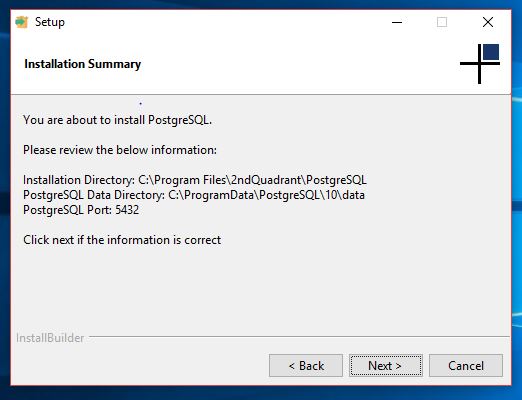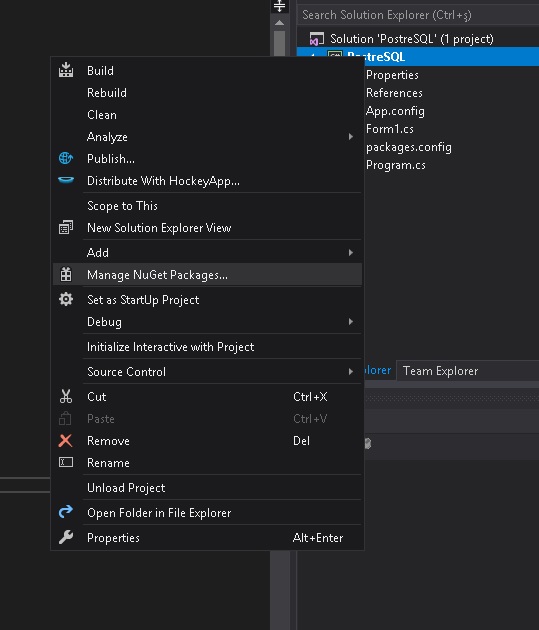

- MINICONDA POSTGRESQL INSTALL HOW TO
- MINICONDA POSTGRESQL INSTALL INSTALL
- MINICONDA POSTGRESQL INSTALL CODE
- MINICONDA POSTGRESQL INSTALL WINDOWS
You can install either Python version 2 or 3 with the version argument. Reticulate::use_python(py, required = TRUE)

You can specify for this installation to be used with reticulate with the following: py <- rminiconda::find_miniconda_python("my_python") The base directory is determined based on the operating system: This will place an isolated miniconda installation in a directory called "my_python in a base directory that houses all miniconda installations installed through rminiconda. rminiconda::install_miniconda(name = "my_python") If you want to install an isolated miniconda for your own uses, you can simply call install_miniconda(). Remotes::install_github("hafen/rminiconda") You can install rminiconda from github with: # install.packages("remotes") # if not installed The miniconda Python installations provided by rminiconda do not interfere with any other Python installation on your system. It also provides utilities for making this installation and configuration an automated part of an R package setup. At its core, rminiconda provides a simple R function that installs miniconda in an isolated, “namespaced” location that you can fully customize for your particular use case.

Ultimately, it is inevitable that you will have users who will have an issue, and it is a lot to ask a user to make sure they have their Python environment configured correctly, to the point that they may choose not to use your package because it’s not clean and easy to install.įor these reasons, I built the rminiconda package. With Python, you don’t have a guarantee that users will have the right Python version or package management system installed, and you can’t pre-build Python into an R package.
MINICONDA POSTGRESQL INSTALL CODE
code written, for example, in C/C++, is that R packages that depend on C/C++ are much easier to use out of the box because of either being pre-built on CRAN for major operating systems, or being easy to build due to the necessary libraries already existing on the user’s machine. One major difference, however, with R as an interface to Python vs. When you think of R as an interface to Python, the universe of things you can do in R gets quite a lot bigger. Python talk that makes you think it has to be one or the other, and also possibly due to prior R/Python solutions that didn’t have as good of a user experience as reticulate does. but for some reason I had never thought of it as a first-class interface to technology implemented in Python. R provides many great interfaces for technologies implemented in other languages like C/C++, SQL, Fortran, etc. See e.g.Lately I’ve been fascinated with the reticulate R package, which provides pretty much seamless access to anything implemented in Python without needing to leave R. If you don't have sudo permissions, installing postgresql via conda can be a good solution - it just means that initializing the database and keeping the server running becomes your responsibility instead of Ubuntu's responsibility. You are unlikely to need multiple postgres installations side by side.Ĭonda remove postgresql sudo apt install postgresql If you want convenience, then sudo apt install postgresql will be best for you - this is tailored for your Ubuntu version and you won't need to care about starting/stopping the server.
MINICONDA POSTGRESQL INSTALL WINDOWS
it provides a simple way for, say, a python package to automatically install postgresql as a dependency on Linux, MacOS and Windows (which is great for developers).Īt the time of writing, however, it does not also provide an integration of the installed binaries into the service architecture of the operating system (which would depend even more on the details of the operating system). It just installs the necessary software.Ĭonda is a cross-platform package manager, i.e.
MINICONDA POSTGRESQL INSTALL HOW TO


 0 kommentar(er)
0 kommentar(er)
